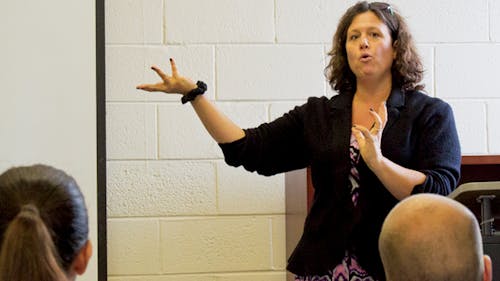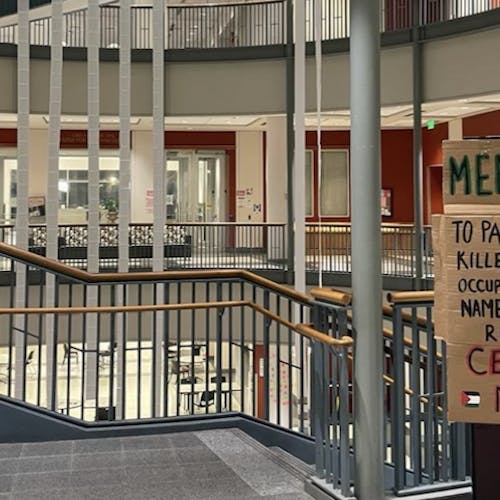Rutgers alumna discusses recession discoveries through book

At the height of the recession, 15 million Americans were unemployed, and 73 percent of Americans were either personally unemployed or knew someone who was unemployed. Single women had the highest rate of unemployment at 12.6 percent, said Rutgers alumna Mary Gatta.
During this time of instability, Gatta served undercover in two personas: an unemployed waitress and an unemployed adjunct professor.
Sponsored by the Department of Sociology, Gatta presented her experience and discoveries yesterday at Davison Hall on Douglass campus with a lecture on her new book, “All I Want is a Job! Unemployed Women Navigating the Public Workforce System.”
In addition to publishing numerous books and articles, Gatta served as the director of gender and workforce policy at Rutgers Center for Women and Work. She is a faculty member at the School of Management and Labor Relations.
She is currently a senior scholar at Wider Opportunities for Women, a Washington, D.C.-based research and advocacy organization.
Gatta said at the time of the recession, men had the highest rate of unemployment overall at 10 percent and women had an employment rate of 8 percent. But when the economy began to recover, women’s unemployment rates were left behind in the improvement.
Women make up half the workforce, but they are amongst the lowest-paid workers, she said. Women head about 77 percent of families living in poverty.
The federal poverty line, developed in the 1960s, is calculated by figuring out what the United States Department of Agriculture says is the food budget for a family and then multiplying it by three. This assumes that food is one-third of a typical family budget, approximately $19,000, she said.
Some have proposed alternatives, and Gatta uses the basic economic security tables, which say that food is not the biggest part of the expenses. It is housing, healthcare and childcare.
“Basic economic needs is not to have a really nice car or not having to going out to dinner,” she said.
Therefore, she said, a single parent with a preschool-age child with standard care needs in New Jersey, and is saving for emergencies and retirement, would need $74,000.
The median income for single mothers in New Jersey is $28,000. If she worked full time at minimum wage, taking into consideration the minimum wage increase of a dollar, she would earn $16,000 a year.
Deborah Carr, chair of the Department of Sociology and organizer of the event, said she could not help but think about the recent article in The New York Times about those who are unemployed.
Middle-class white men would not take just any low-income job, they would wait for a decent paying middle class job, and women would take an available job.
Gatta said at the time of the recession, both men and women had to lower their expectations for obtaining a job, but the struggle has definitely hit women harder.
Lexi Gervis, a graduate student in the Department of Sociology, said she came to the event because she was interested in Gatta’s ethnographic methods.
“I wanted to learn more about the interaction because gender policy and the workforce,”
Gervis said, adding that she wanted the perspective of someone who is currently not in academia.



